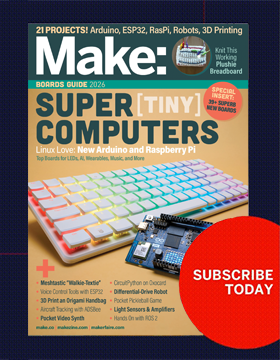Wind-powered scarf knitting machine
Product designer Marel Karhof coupled an antique sock-knitting machine to a windmill. She collects the knitted material at regular intervals, and its length thus reflects the “windiness” of the period over which it was produced. The N+1 step, it seems to me, is to somehow make the amount of wind effect the scarf’s color over time. Perhaps by adding one of these CMYK thread color-matching machines to the mix? [via CRAFT]









